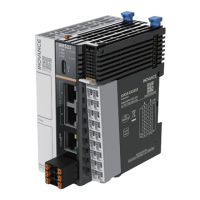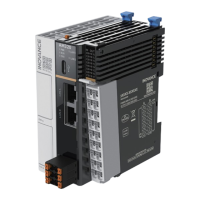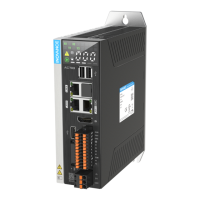-104-
Introduction
5.7 Wiring of Remote Expansion Modules (EtherCAT)
5.7.1 EtherCAT Wiring Requirements
■
Making network cables
"8($BUFTIJFMEFE
UXJTUFEQBJS
$BCMFDPOOFDUPS3+
DPOOFDUPS1$9
$BCMFDPOOFDUPS3+
DPOOFDUPS1$9
Figure 5-48 Making a cable
■
Use Cat5e shielded twisted pair cable with steel-shell molding wires.
■
Signal lead arrangement
Pin Signal Signal Direction Signal Description
1 TD+ Output Data transmission +
2 TD- Output Data transmission -
3 RD+ Input Data reception +
4 -- -- Not in use
5 -- -- Not in use
6 RD- Input Data reception -
7 -- -- Not in use
8 -- -- Not in use
■
Length requirement
The FastEthernet technology has proved that the cable length between devices cannot exceed
100 m when the EtherCAT bus is used. Otherwise
,
signal attenuation occurs
,
adversely aecting
communication.
■
Technical requirements
No short circuit
,
circuit break
,
misplacement
,
or poor contact is detected in the 100% conduction test.
The EtherCAT bus transfers network data through a shielded cable. The following network cable is
recommended:
Item Specications
Cable type Elastic crossover cable
,
S-FTP
,
Cat5e
Standards
EIA/TIA568A
,
EN50173
,
ISO/IEC11801
EIA/TI Abulletin TSB
,
and EIA/TIA SB40-A&TSB36
Wire type Twisted pair
Number of pairs 4
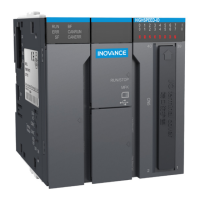
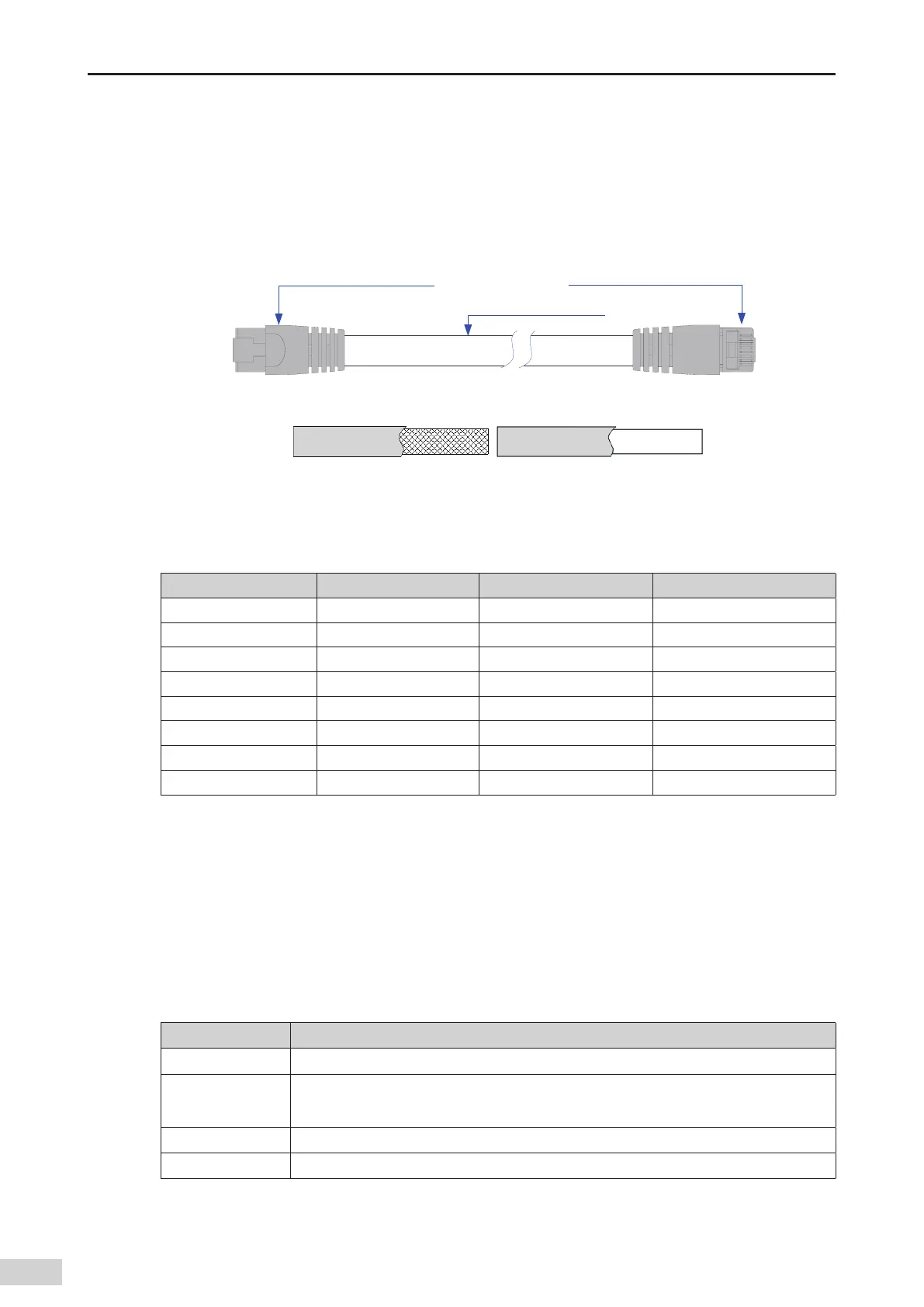